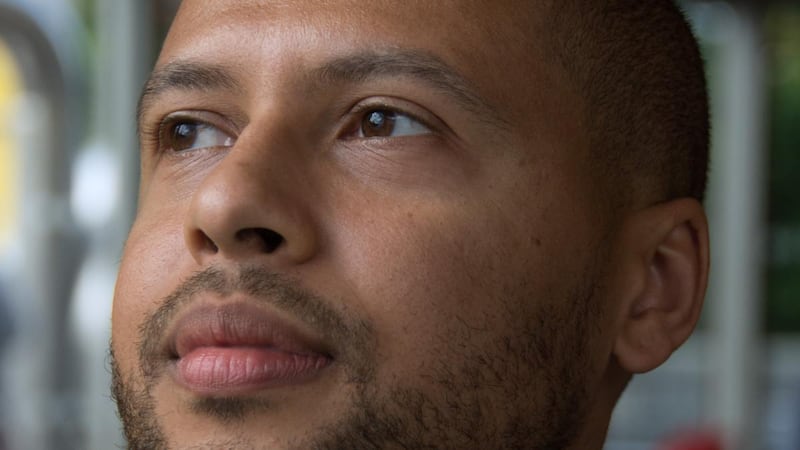“The colours began fading seven weeks ago, the day after my mother disappeared.” Seventeen-year-old Minnie is the middle of three sisters, all visual artists following the path set down by their brilliant, if unpredictable, mother. Now the world without her is “a little chalkier. Like a drop of bleach has been added to the sky.” The only splash of colour comes with visions of her mother – visions that make Minnie fear she too will succumb to the same mental illness responsible for her mother’s absence.
Harriet Reuter Hapgood’s second novel, How To Be Luminous (Macmillan, £7.99), handles this magical-realist tale of grief gracefully, resisting the urge to let the more whimsical elements “fix” the complicated emotional lives of the characters. Minnie yearns for her mother’s safe return while also acknowledging, “even if she comes back, there will never be a moment when she didn’t leave me”. Art serves both a vital form of self-expression and a source of pressure and frustration. The world is beautiful and painful all at once, and there are no easy answers. With echoes of Jandy Nelson and Emily X R Pan, this is a story for older teenagers to sob and swoon at in equal measure.
Concerns over inheriting a parent's illness also haunt the newly-bereaved Hannah, one of two narrators in Sif Sigmarsdóttir's The Sharp Edge of a Snowflake (Hodder, £7.99). Hannah is an aspiring journalist whose arrival in Iceland, where her father lives, coincides with the discovery of a dead body. She's convinced she can connect the dots, can "pave over my own misery with someone else's" – yet aware, and anxious, that this belief may be a delusion that would mean she's inherited her mother's "curse".
Coming-of-age quickly takes second place to an unfurling mystery, though; second narrator Imogen is a social media “influencer”, whose chapters reveal the weeks leading up to the discovery of the body and the distasteful history of the man who inhabited it. A great deal is thrown at the reader here: questions around social media and identity, the mining of data and the targeting of vulnerable individuals, sexual assault, the capacity for foreign governments and/or terrorist groups to manipulate politics . . .
It’s inevitably a tad overwhelming, and the novel ends up oscillating between thought-provoking social commentary and page-turning thriller. The penultimate chapter, for example, dissects the “snowflake” label so often flung at today’s youth, particularly online, and reminds the reader that “in great enough numbers, snowflakes can be dangerous” while the final chapter closes with a paragraph in the style of “James Bond will return . . .” Despite the uneven tone, it’s an exciting read and one for fans of Nordic noir.
Another relatively unusual setting for YA fiction: Randy Ribay's Patron Saints of Nothing (Stripes, £7.99) takes us to the Philippines, with high school senior Jay Reguero on a quest, ostensibly to connect with his extended family and heritage and in truth to discover what happened to his recently deceased cousin. Jay is well-intentioned but full of youthful bravado; his vision of confronting his uncle ("I will hold his gaze until he gives me an answer, and if he lies, I will demand the truth. Like a tree in the wind, he will bend before the strength of my conviction.") rapidly dissolves when faced with reality.
Aside from racial and cultural identity, the novel explores the current war on drugs in the Philippines, a topic Jay, like many readers, needs to discover more about as the story progresses. Jay’s cousin is a victim of this war and his uncle is an enforcer of the policy, but his black-and-white view of the world – and of individuals within a system – shades into grey. This political and powerful book puts Ribay alongside writers like Angie Thomas and Nikesh Shukla whose teen fiction firmly but eloquently draws attention to social and racial problems.

Ribay's dedication, "For the hyphenated", could just as easily apply to poet Dean Atta's The Black Flamingo (Hodder, £12.99), a verse novel about a boy whose mother tells him: "Don't let anyone tell you / that you are half-black / and half-white. / Half-Cypriot / and half-Jamaican. / You are a full human / being. It's never as simple / as being half and half." But at university Michael feels "like Goldilocks" trying to find a group that fits, not just in terms of his mixed-race heritage but his queer identity. Whatever the label, he always seems to be not quite "enough".
Discovering the world of drag is a revelation; he feels “a little closer to becoming” as he develops the character of the Black Flamingo, an alter-ego to draw strength from – in or out of costume. Accompanied with simple but effective illustrations by Anshika Khullar, this celebration of difference and containing multitudes is at times heavy-handed and preachy, but ultimately inspiring.
Poetic forms can so easily veer into didacticism, and making sure the reader "gets" the "moral"; a similar tendency runs throughout Matt Abbott's A Hurricane In My Head (Bloomsbury, £6.99). This collection for younger teenagers acknowledges that "Reading poetry out of choice / is a dangerous confession" and that "it won't help your reputation, / but it helps your mental health."
Focusing on the dramas of everyday life, the simple verse sometimes leans towards the simplistic, particularly in closing stanzas: “I’m so proud of my friend. / I hope the bullies saw sense. / You should never have fun / at others’ expense.” The goal to get young people excited about poetry (the book closes with a series of writing exercises) is admirable, but the capacity of poetry to offer more insight than a fridge magnet is not always evident within these pages.
Claire Hennessy is a writer and YA commentator.




















